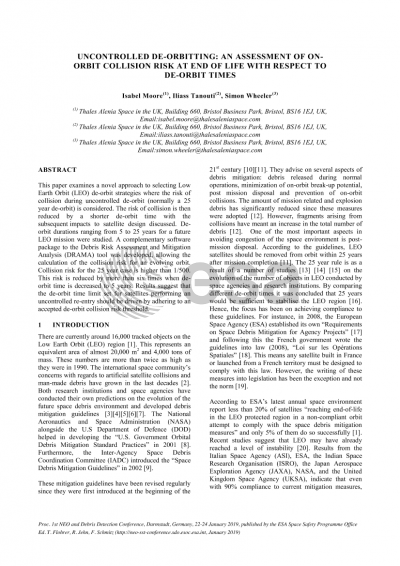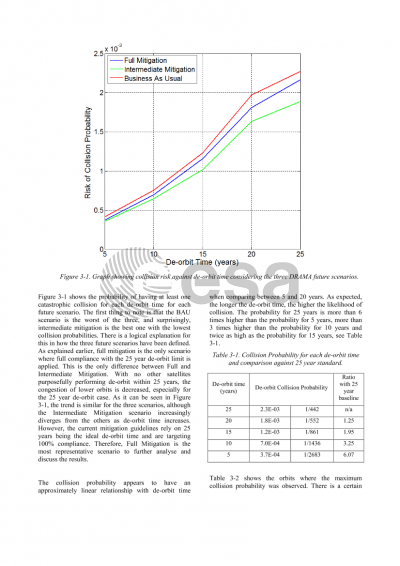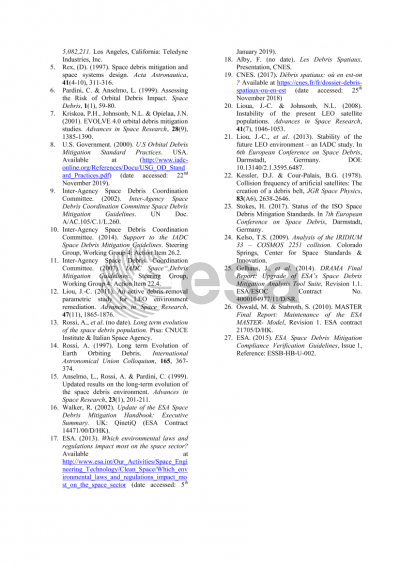Document details

Abstract
For civil/commercial satellites no risk analysis is performed for on-orbit collisions with debris during uncontrolled de-orbit, and this risk is significantly influenced by de-orbit time. ESA’s Debris Risk Assessment and Mitigation Analysis (DRAMA) tool only allows the assessment of the collision risk for one given orbit, and is not designed for an evolving orbit as is the case when performing an uncontrolled de-orbit. Space agencies’ debris mitigation strategies for Low Earth Orbit (LEO) satellites are focused on minimising the ground casualty risk during atmospheric re-entry and limiting de-orbit time to an industry standard of 25 years. The evolution of objects in space is faster than previously forecast, and can only be envisaged to continue to increase. The recent growth of the private space sector, the emergence of mega-constellations and the unprecedented hypervelocity collisions involving artificial satellites2, are all contributing to these changes. It is now known that limiting de-orbit duration to 25 years will limit the growth of debris, but not halt it, hence there is a need to study shorter de-orbit times. This is extremely relevant as countries are currently developing their own space sector regulations3.
Thales Alenia Space UK is evaluating the system-level impact of shorter de-orbit times to allow quantitative trade-offs between this and risk of collision during the de-orbit phase. This study highlights the importance of preventing collisions even after EoL. The objective was to find a de-orbit time that reduced risk of collision during de-orbit, and therefore prevent the congestion of LEO orbits, but did not lead to such a major design impact that future projects become infeasible or too costly.
A future LEO mission has been used as a flagship mission for the study. Choosing a real mission allowed a direct evaluation of the impact of de-orbit time on probability of collision risk and increase in propellant mass, and the consequential system impacts. ESA’s DRAMA software, and specifically the Oscar and Ares tools, were used throughout the project. Oscar was used to obtain the evolving orbital parameters during de-orbit. In the scope of this project a Java script has been developed that allows Ares to then run iteratively with this data, allowing collision risk to be viewed over an evolving orbit. Finally, a total collision probability risk for the whole disposal phase was obtained, allowing a direct comparison between collision risk and de-orbit durations ranging from 5 to 25 years.
The results of the study will mean de-orbit collision risk becomes a design driver from the very first stages of mission design. It will aid in informing future space policy and international standards which could mitigate against undesirable outcomes such as Kessler syndrome.
Preview











